 Updated: February 15, 2016
Updated: February 15, 2016
Inbound marketing is, simply put, quite popular these days. If you have any doubt about that just look at HubSpot, a leader in inbound marketing. Founded in 2006, it went public last year, is valued at over 1 billion dollars and has over 15,000 customers. That goes to show the popularity of this approach to marketing. If you are unfamiliar with the definition, read about inbound marketing on our blog. You don’t want to miss out on this massive internet marketing shift.
While all of this is fascinating, we know you really clicked to see our recommendations on blogs, so here are the top 7 inbound marketing blogs we recommend you keep up with:
#1 HubSpot Blog
Its been mentioned once already, but we like HubSpot a lot around here at Half a Bubble Out. In fact, we use the HubSpot platform to manage our inbound marketing services for our clients and ourselves. I feel like this intro doesn’t do it justice, but if I were making this into a short film I would definitely have a spotlight on the HubSpot logo and some very dramatic music. We have seen great success, been impressed, and believe HubSpot really know its stuff.
*On a side note, it offers some really great and free training resources for those interested in inbound marketing at the HubSpot Academy here.

#2 Seth’s Blog
If you haven’t heard of Seth Godin, now is a great time to be introduced. He has authored several bestselling and famous marketing books such as “Tribes”, “Linchpin” and “Purple Cow”. Seth gets inbound marketing, and in fact he got it long before most did. He has been a leader in attracting audiences naturally for years. Oh, and he also has one of the most frequented business blogs on the planet, and one you definitely need to read.
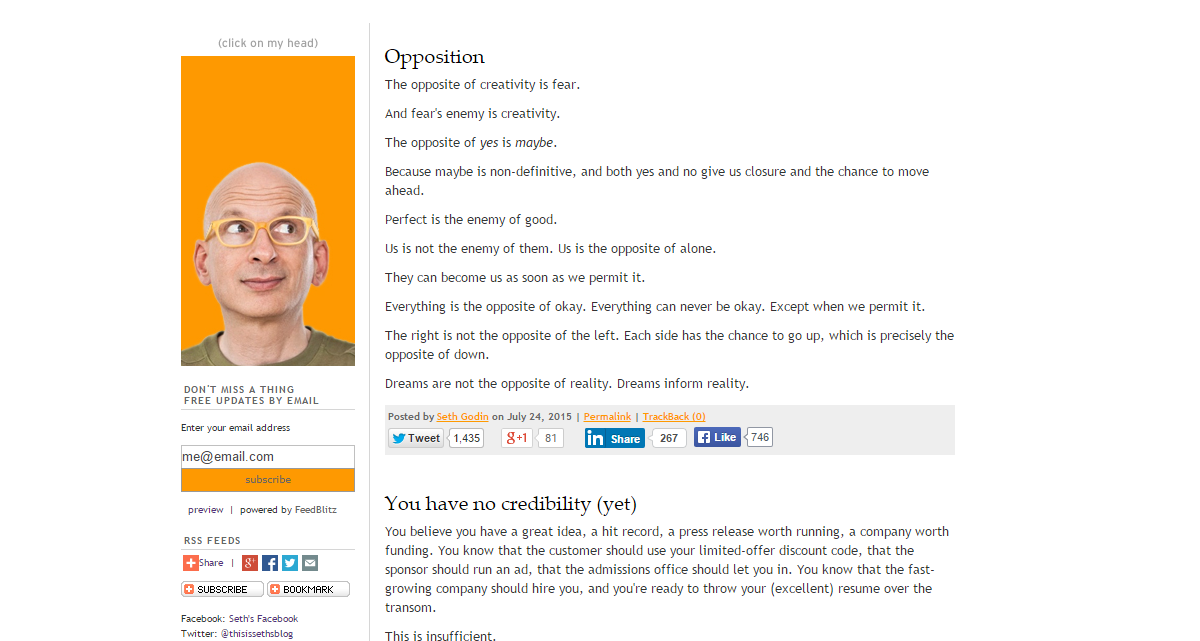
#3 Copyblogger
Copyblogger focuses on content marketing and helping you with all types of content creation. It keeps a fresh stream of insightful articles coming along that we think you will find helpful. To put it in Copyblogger's words, it exists to teach people “how to create killer online content." Not a bad thing to learn.

#4 Inbound.org
Inbound.org is a great resource for all things inbound marketing. You can find useful stuff on the blog, like articles and discussions. Basically, this is a community of people all obsessed with inbound marketing.
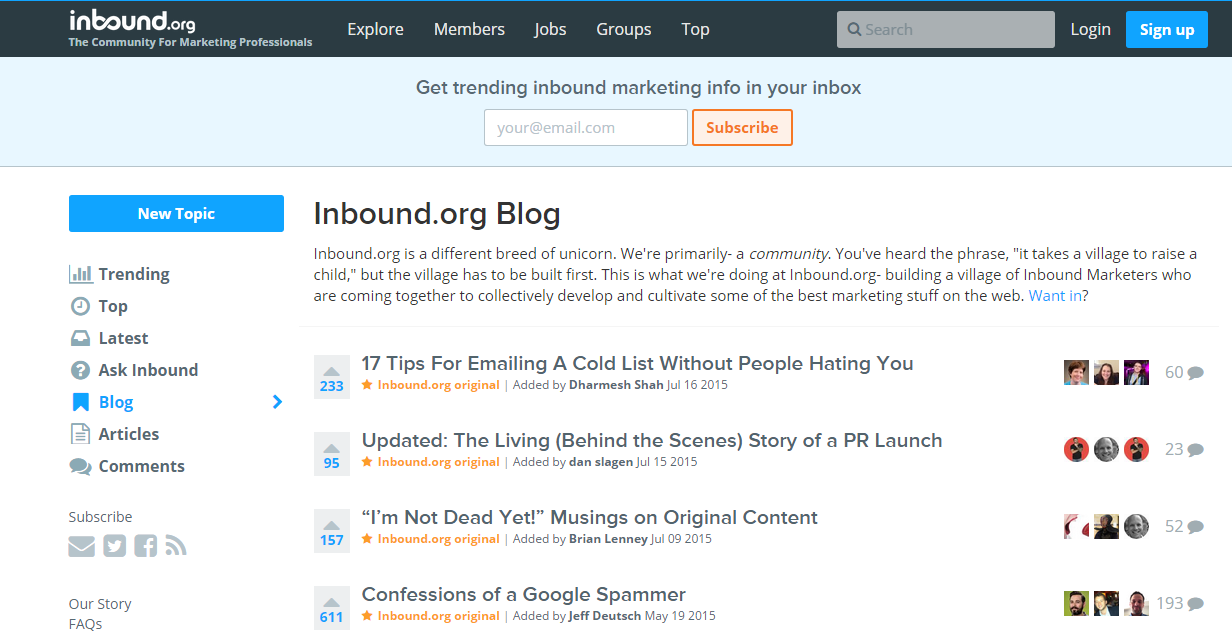
#5 MozBlog
The Moz Blog focuses on inbound marketing and SEO related topics. Moz.com started in 2004 as SEOmoz, and was originally an SEO consulting company. It has developed into a large organization focused on inbound and SEO. We constantly find great information related to all things Google from this site and recommend you check it out.
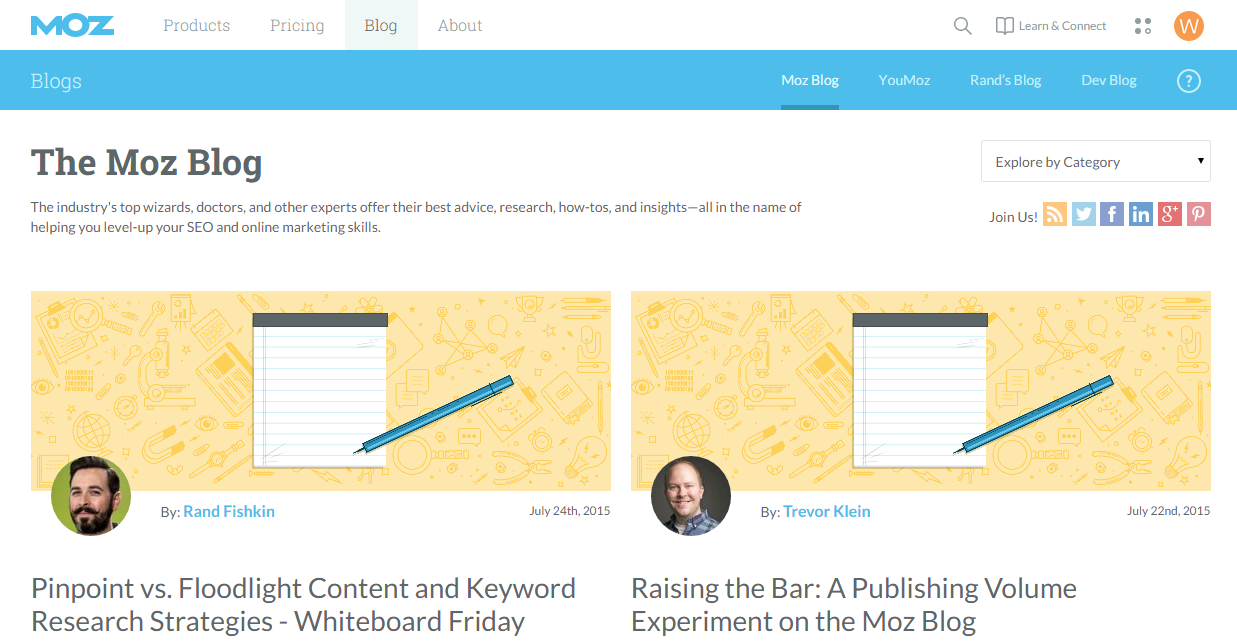
#6 Guy Kawasaki
Guy Kawasaki is an innovator and influencer in the marketing industry, specifically with content and social media marketing. He is known for staying up on the latest trends and offering new strategies for marketing. Definitely worth checking out his blog (and following him on social media).
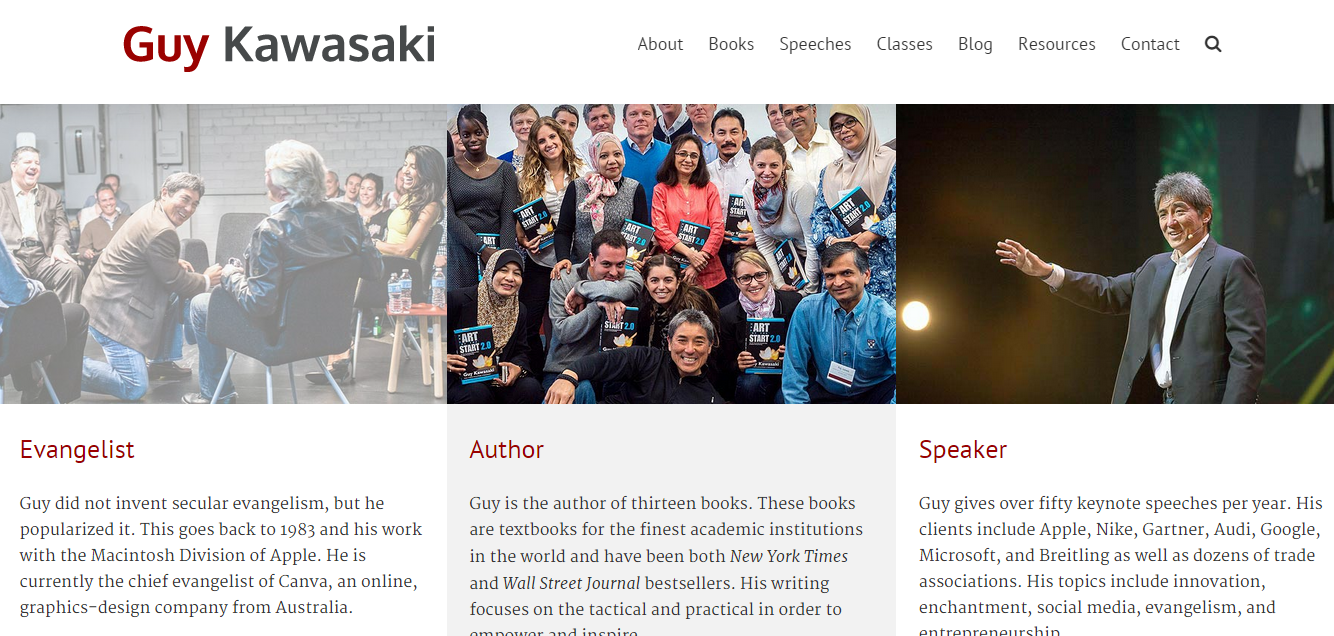
#7 Search Engine Land
Search Engine Land is not specifically an inbound marketing site, but it has tons of helpful articles on SEO topics, so we’ve included it on our recommended list. Check out the articles often to stay up on the latest SEO news.
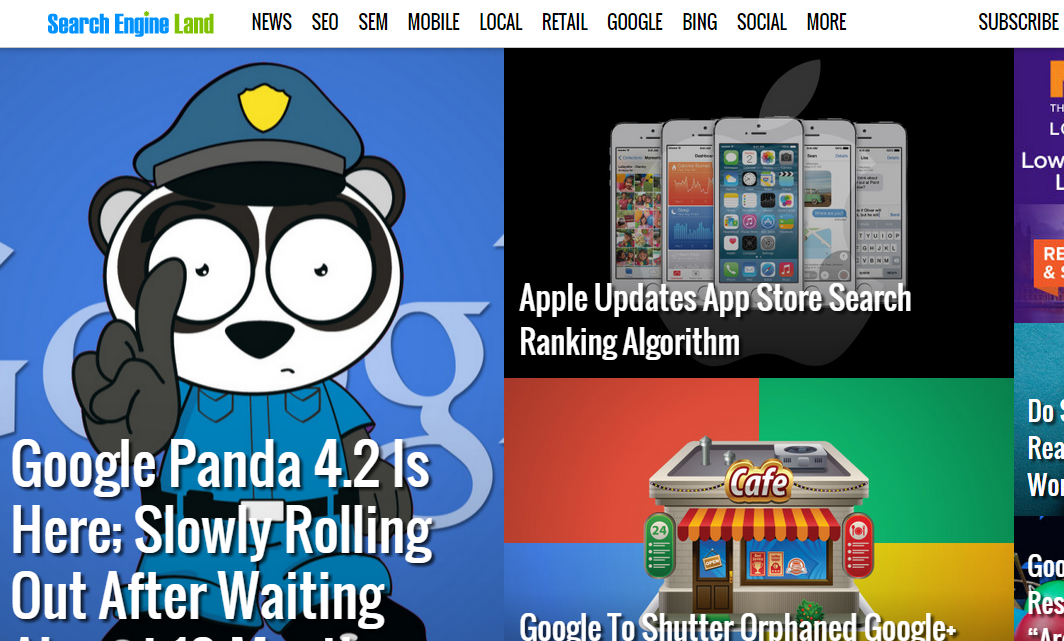
Shameless Plug Time
We hope you found this helpful and that these blogs add value to your marketing expertise. Of course, if you want a bonus we recommend reading our blog here at Half a Bubble Out (that was the shameless plug). We love inbound marketing and write often on many related topics.
If you would like to learn more about the inbound marketing process, we also have a free offer for you to download below:
Part 2: Tips from Top Content Marketing Blogs to Make You a Better Writer
 At the center of your inbound marketing strategy is content – but creating content doesn’t come easy for everyone. If your response to being asked to write something any more complex than a basic email or social media post is making you sweat profusely and break out in hives, you aren’t allergic to content marketing – you’re just afraid.
At the center of your inbound marketing strategy is content – but creating content doesn’t come easy for everyone. If your response to being asked to write something any more complex than a basic email or social media post is making you sweat profusely and break out in hives, you aren’t allergic to content marketing – you’re just afraid.
You might not like to write and never will like to write, but to be effective at gaining more customers online, you have to learn how to create content and create it well, from basic spelling and grammar to developing your ideas and understanding that yes, it does work. We’ve pulled together some tips from our favorite content marketing blogs to give you a starting point before jumping into the word pool.
8. Content Marketing Institute
CMI is great for education, training, practical how-to guidance, advice, an active community with other marketers, and to simply answer questions and provide resources for content marketing.
READ: 48 Content Writing Examples, Tools, Tips, and Resources
By: Mike Murray
Tip 1: Know your audience
You need to speak their language, but it doesn’t mean settling for jargon that can clash with creative phrasing. Typically, an informal, conversational approach works best when you’re creating content.
Other content writing suggestions include:
- Focus on actionable content that someone can use in their lives or jobs right away.
- Write in first person or second person.
- Be careful with humor, which can fall flat for the reader.
- Use profanity rarely because it can throw off someone who may wonder why the content includes those words.
- Don’t be so creative that a reader struggles to detect your main point.
- Avoid starting sentences with vague words like this or that.
- Link to other websites, newsletters, and blogs because the links provide added value to visitors and help establish your credibility.
Tip 2: Get visitors to take the right actions
Sometimes it’s a simple word or phrase that can prompt someone to take the next step. Buffer offers a list of 189 words, including words that focus on exclusivity.
Tip 3: Remember that length depends on the context
It’s easy to stick to some content length rules and preferences.
For example, you will want to maximize the 35 characters you get on each line of a Google ad. With social media, you might improve engagement by stopping well short of the maximum character limits.
It gets tougher with website pages, articles, and blog posts. I understand that short pieces (let’s say anything under 500 words) are easier to consume for online readers. But longer content can draw in people as well. Visuals in the core content and within the site architecture can support your text.
Odds are that your agency or company will have policies that control length. But there should always be exceptions.
If you don’t write enough, you disappoint someone by not devoting sufficient attention to a topic. If you provide too many details, you might overwhelm a reader who might miss your primary ideas.
9. Grammarly
Grammarly is a go-to source for all things spelling and grammar. Let’s face it, spelling and grammar rules in the English language can be hard to understand, let alone remember. Grammarly discusses the topics in fun and compelling ways.
READ: 30 Grammar Mistakes Writers Should Avoid
If you had a dollar for all the grammar mistakes you’ve made (or have yet to make) in your life, you’d be rich by now. Unfortunately, you don’t get paid for making grammar mistakes, and making too many errors could cost you time and money at work or in school.
To save you time and money, as well as embarrassment, Grammarly collaborated with Daily Writing Tips and Write to Done to compile a list of 30 grammar tips for writers. Use these handy tips to improve your writing so your work will be clearer, accurate, and more professional.
1. Overuse of adverbs
The boy ran really fast to catch the runaway ball.
The boy sprinted to catch the runaway ball.
Adverbs—those words that often end in -ly—modify verbs. They’re okay once in a while, but in excess they’re an indicator of weak verb choices. In our example, the adverb “really fast” modifies the verb “ran.” But does “really fast” paint a more vivid word-picture for the reader? Use a juicier verb like “sprinted” instead.
2. Too many prepositional phrases
The caravan came over the top of the hill.
The caravan crested the hill.
Prepositions are those words that often come before nouns and pronouns to show direction, location, or time. In the first sentence we have two prepositional phrases—“over the top” and “of the hill.” Excessive prepositional phrases render your writing wordy. Whenever possible, simplify.
3. Ambiguous (“Squinting”) modifiers
Listening to loud music slowly gives me a headache.
When I listen to loud music, I slowly develop a headache.
A squinting modifier is a misplaced modifier that, because of its location in a sentence, could modify either the phrase that precedes it or the one that follows it. (In the example sentence, is the subject listening to music slowly or slowly getting a headache?) To correct a squinting modifier, move its position in the sentence to make it clear to the reader which word you intend to modify.
10. Contently
Contently is a great resource to learn the latest online marketing trends. If you’re ever questioning why you’re investing in this content marketing thing, Contently will convince you again that it’s worth it.
READ: Why use content marketing?
Companies have realized that telling stories that people actively want to watch, read, and listen to is way more efficient and effective than traditional advertising—in the moment, but especially in the long term.
Consider these statistics about content marketing:
- 75 percent of marketers generated positive returns from content marketing. (AdAge)
- Marketers who publish a blog are 13 times more likely to have a positive ROI. (HubSpot)
- 78 percent of CMOs think custom content is the future of marketing. (Demand Metric)
- 74 percent of readers trust educational content from brands—as long as it doesn’t push a sale. (Kentico)
- Kraft generates the equivalent of 1.1 billion ad impressions a year and a four-times-better ROI through content marketing than through targeted advertising. (AdAge)
- 77 percent of B2C marketers and 76 percent of B2B marketers say they’ll create more content in 2016. (Content Marketing Institute)
The proof is in the data: Content marketing simply works.
If you’re interested in developing a content marketing strategy for your company, but don’t have the time or just don’t like to write, contact us at Half a Bubble Out. We have content creators that would love to get to know your business, your industry, and create content to tell your story.
Since 2002, Half a Bubble Out has been dedicated to providing marketing, advertising and small business consulting that meet the needs of our clients. We specialize in powerfully telling stories through Inbound Marketing to grow your business filled with more passion and provision. Based in Chico California, we serve clients throughout Northern California and across the country to New York.




